Small-scale coastal fishing
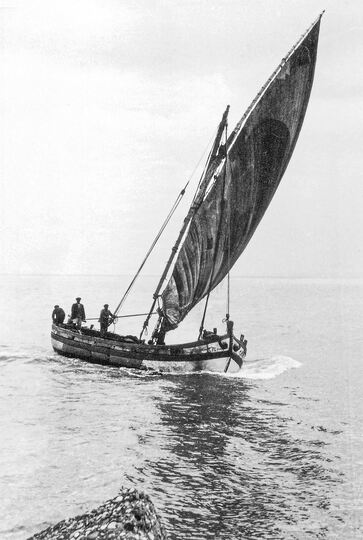
Pots, nets, and other tools completed the shore-based fishing methods, but some seafood, such as mussels or razor clams, could be harvested by hand or by skilled fishermen divers without modern underwater equipment. Characteristic figures of shore fishing were the sciabbecùtte, also known as sbalzocchi (or sbarzocchi); these young boys or older men, not necessarily seafarers, helped to haul the sciàbbeche (trawl net), boats, and fish ashore, receiving in exchange some of the less prized fish from the catch to take home.
Some types of shore fishing are still practiced today, although almost exclusively for pleasure and personal consumption.
Coastal fishing was normally practiced within one nautical mile (less than two kilometres) of land, or directly from the shore. Unlike deep-sea fishing, it envisaged the use of smaller sailing or rowing boats, making it a less expensive option. The crews were also small, consisting on average of three men. This marginal activity was prevalently aimed at family sustenance and was carried out as a second trade, since fishermen often owned plots of land or had other jobs.
Winter and summer corresponded to two different types of coastal fishing. In winter, non-migratory species (red mullet, grey mullet, blotched picarel, dentex, scampi, conger eel, gilt-head bream, mantis shrimp, and cuttlefish) were the catch, while in summer the focus was mainly on the migratory – particularly the pelagic – species that passed in large shoals near the shore (sardines, anchovies, tuna, and mackerel). The abundance of fish in the summer attracted amateur fishermen, who would help the professionals haul in the nets and would themselves fish from the shore, during their seasonal break from agricultural work.

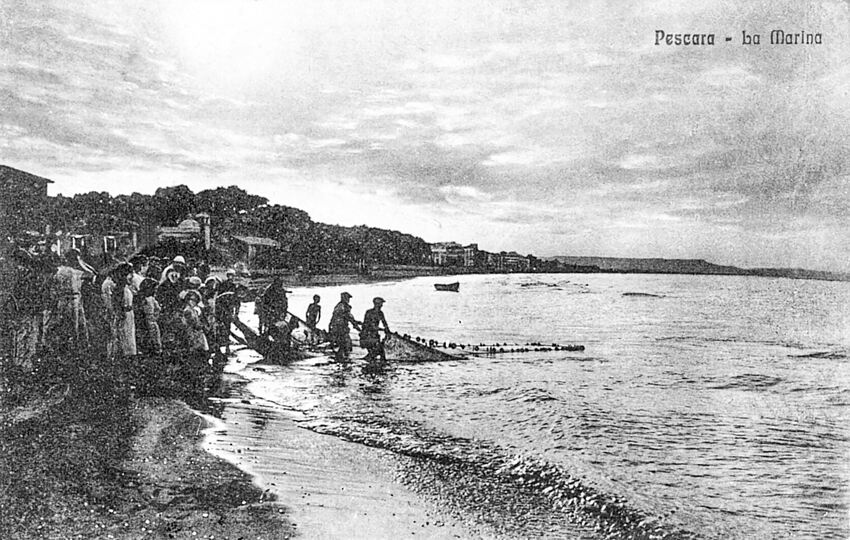
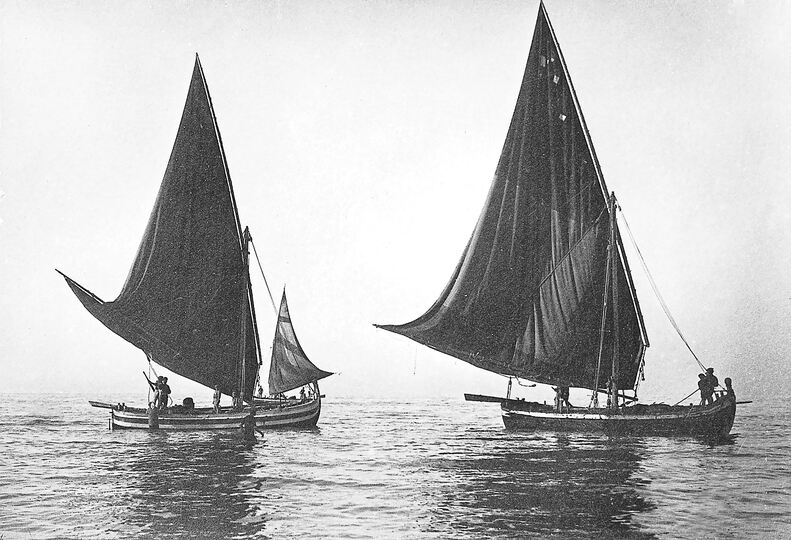
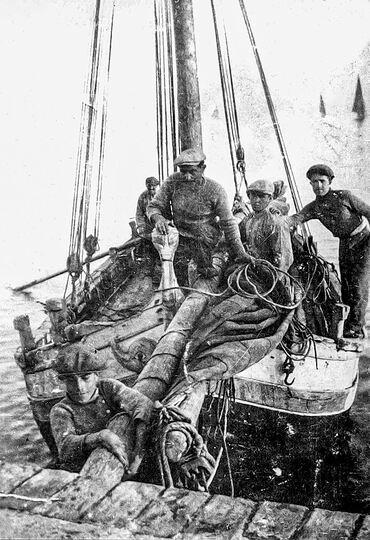
It was also equipped with two or three oars to allow it to move in search of the wind in calm weather and to facilitate manoeuvres near the shore. Lacking a centreboard, like the paranza it had a large, sturdy rudder, operated from the stern deck using an equally robust tiller. Because of the particular conformation of the region’s seabed and coastlines, the hull and keel were flat, also making it easier to haul the boat onto land. To do so – and obviously to push the boats back into the sea – so-called palancole were used – small wooden beams covered in grease to allow the flat keel of the boat to slide over them easily.
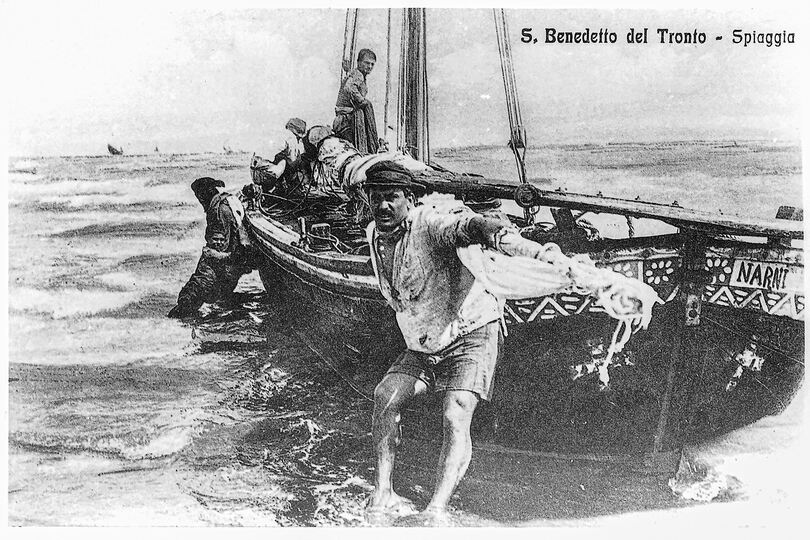
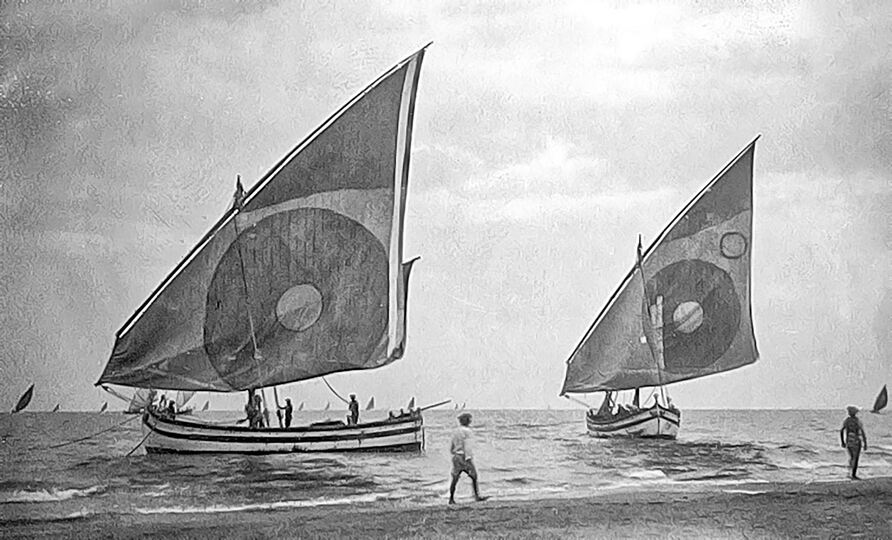
Battelli
These small wooden boats of various shapes, between approximately 3–6 metres in length, had both oars and a single sail, and could only carry two or three people. They were generally used to take food to the paranze working in the fishing grounds and to bring the catch back to shore for sale, because they were easier to handle and quicker to beach. In good weather they were also used for fishing off the coast with hooks, pots and gillnets.
Lancetta
Younger sister of the paranza, the lancetta was the most widespread traditional boat for small-scale fishing along the coasts of the central Adriatic from the mid-nineteenth century until the 1970s. Smaller than the paranza (under 10 metres in length), it had a single mast fitted with a large lateen sail and jib. It was used for daily fishing close to the shore with a crew of no more than 4–5 sailors, almost always including a cabin boy, the murè, in addition to the parone, the skipper.
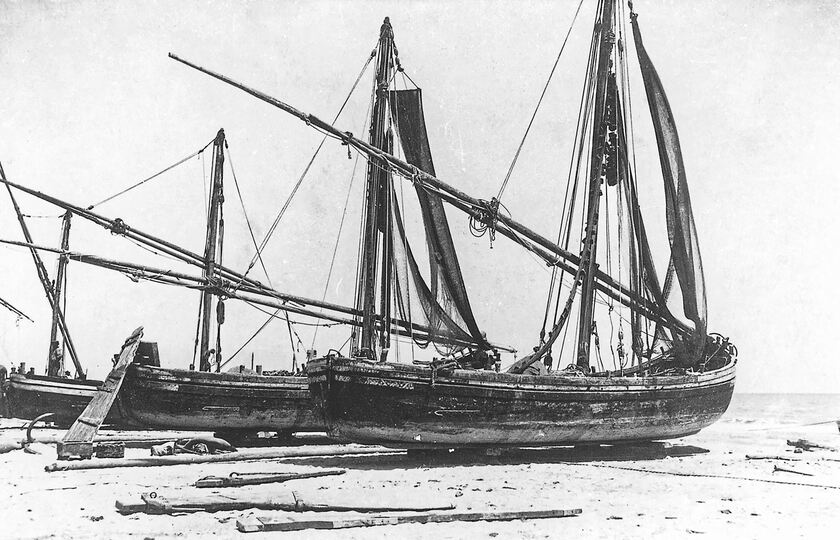
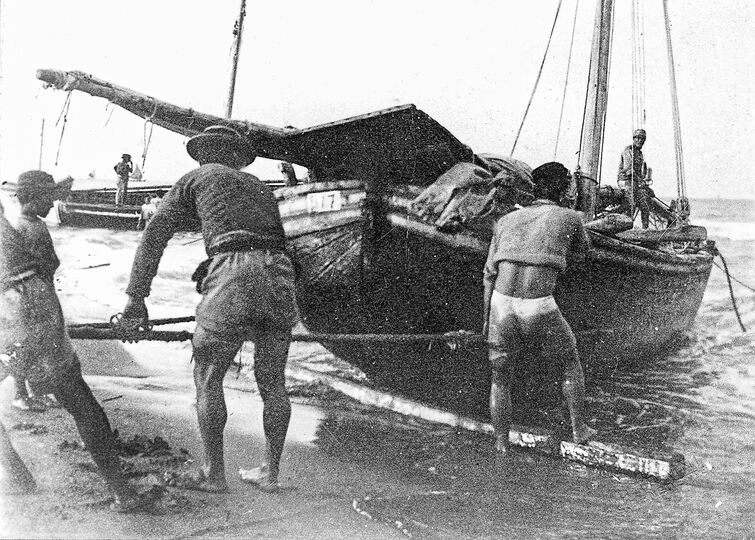
As the boats were pulled out, the beams were removed one by one from the sea side and placed higher up the beach. When launching, the strength of a single man resting his back on the stern was often enough to push the vessel into the water. As with the larger paranza boats, the lancetta could also be recognized by the bright colours of sails and the symbols painted on them using ochre earth, pine bark infusion and a little cooked linseed oil.
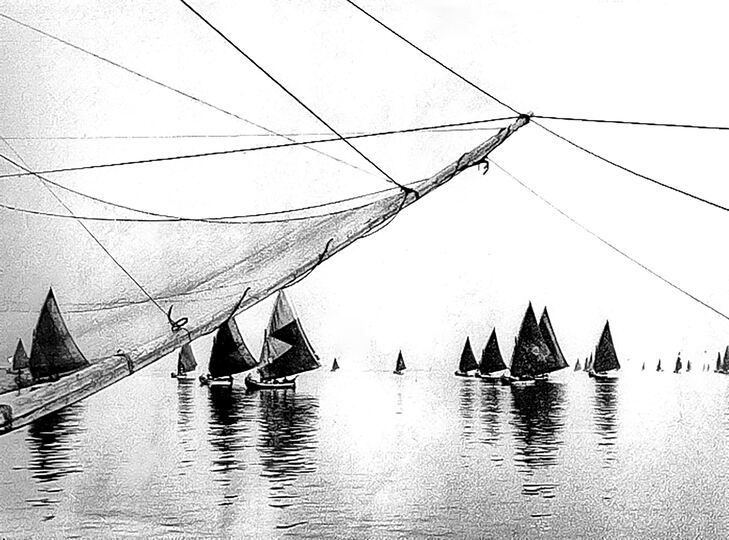
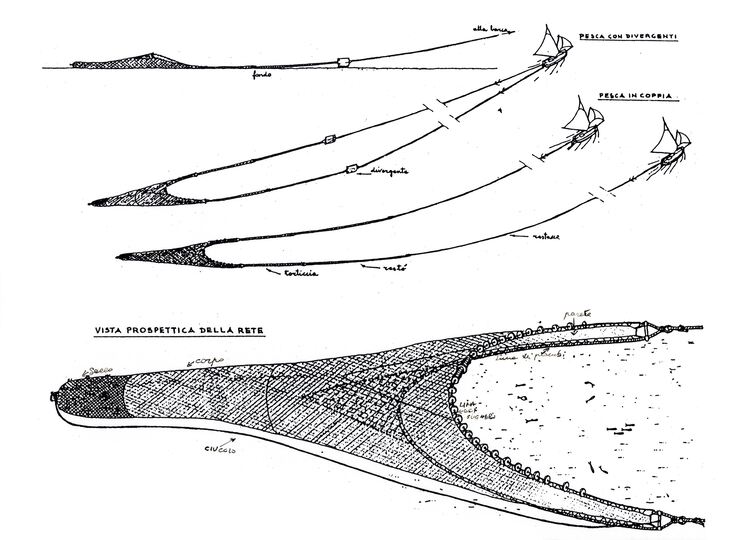
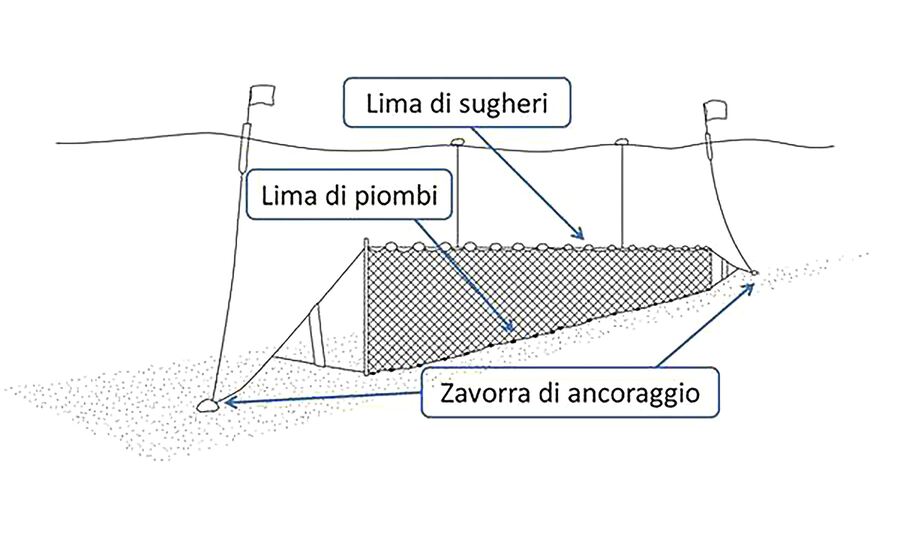
Sciàbbeche
This ancient method of fishing involved trawling from the shore. Using a rowing boat, the net, dozens of metres long, was spread out in the sea to form a semicircle. It was then pulled ashore by two teams of fishermen who progressively closed the bag at the sides, imprisoning the fish. Not only seamen but also helpers from the community took part in this kind of tug of war, in exchange for a small part of the catch: “Chi se 'mbonne la cella, j'attocche la mujelle” (“Whoever gets his groin wet, will get the mullet”). This practice saved entire families from starvation during times of war, when it was forbidden or impossible to go out to sea on boats and almost all able-bodied men were enlisted in the navy. Old fishermen, teenage muré, mothers and young wives were all employed in sciàbbeche fishing, the only method allowed.
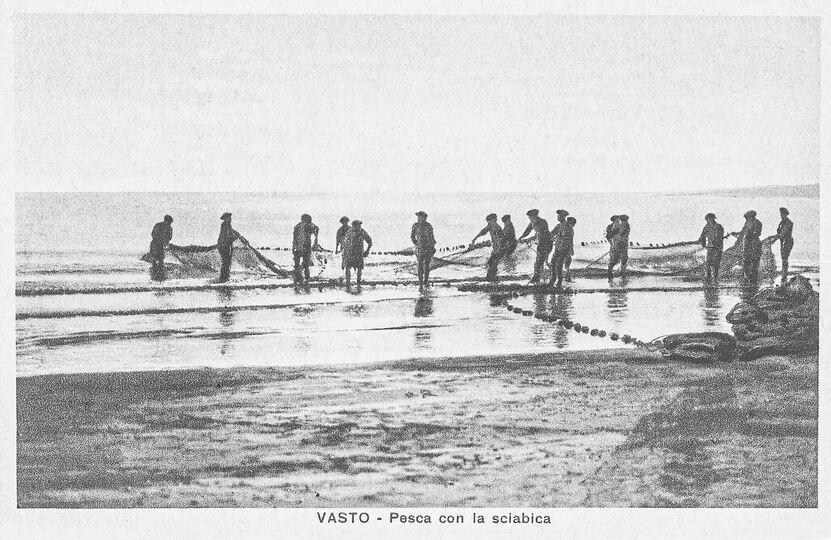
these were formed of three long nets joined together, equipped with a row of corks at the top and a row of lead weights on the bottom. The central net had a smaller mesh of very fine linen and did not have to be stretched, while the wider-meshed external nets were made of thick hemp thread. When they were placed in the water the three nets divided: the larger fish entered the eye of the first external net and became entangled in the inner sac, pushing it out into the eye of the third external net and trapping the fish. These nets are still used today by fishermen to catch bottom-dwelling species.
Nets
Each net was designed and sized to capture a particular fish species using different fishing techniques. There were three broad categories: trawl nets, seines, and gillnets. Most nets were made from hemp, more rarely linen, and were dyed with decoctions of resinous pine bark to make them more resistant and less visible to fish.

Gillnets
Generally rectangular in shape, gillnets were held vertically in the sea by leads and corks and left undisturbed for some time, waiting for fish to become entangled in them. Arranged so as to counteract the migratory movements of the fish according to the prevailing currents, they were usually lowered a short distance from the beach from small rowing boats, which went out at sunset. The nets were then taken in before dawn, in order to capture the fish that went in search of food during the night or approached the coast to lay their eggs. The gillnets, of different sizes and mesh widths, were divided into surface or bottom nets, depending on the type of fish one hoped to catch. Among the types of gillnet we should in particular mention “trammel nets”, highly versatile tools designed to catch fish of different sizes, although the actual nets of course varied depending on the species being fished for;
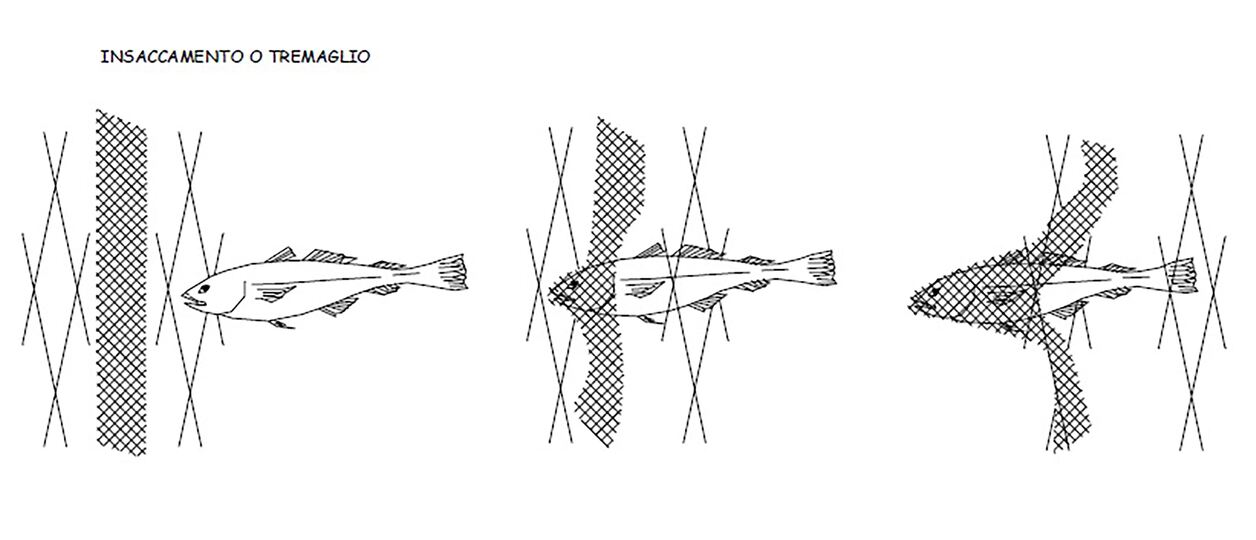
Schiazze
The schiazzo was a traditional cast net used by a single person either from the shore or from a boat, and in any case in shallow waters; it had a circular shape of about five metres in diameter, with many small lead weights sewn to the edge. It was thrown from above with a movement of the arms that made the net open into a circle shape to cover the surrounding area. It was mainly used to capture dreamfish and grey mullets that came in close to the shore during high tide to feed on algae.

Other tools
Alongside actual nets, many other fishing tools were used; these were made by the fishermen themselves or by their families.
Fishing with pots
The pots were a kind of cage made from woven rushes and other materials, with an opening that allowed the fish, attracted by bait, to enter, but not to leave, owing to a truncated cone bottleneck. In the past, before the invention of nets, all types of fishing were carried out with specifically designed pots. The pots were used in groups of two or more and lowered to the bottom tied to a large stone at a depth of 8-10 metres, while a rope connected them to the surface with a float. The pots were brought up daily, or at most after a couple of days. In our waters the pots were mainly used to catch cuttlefish or seasonally in river estuaries for eels. The cerchietto, a particular type of pot made from two concentric metal circles joined by a net, was instead used for fishing for li bummalitte (sea snails) using bay, myrtle or similar plant leaves as bait where the molluscs sought refuge: myrtle grew abundantly in the coastal pine forests.
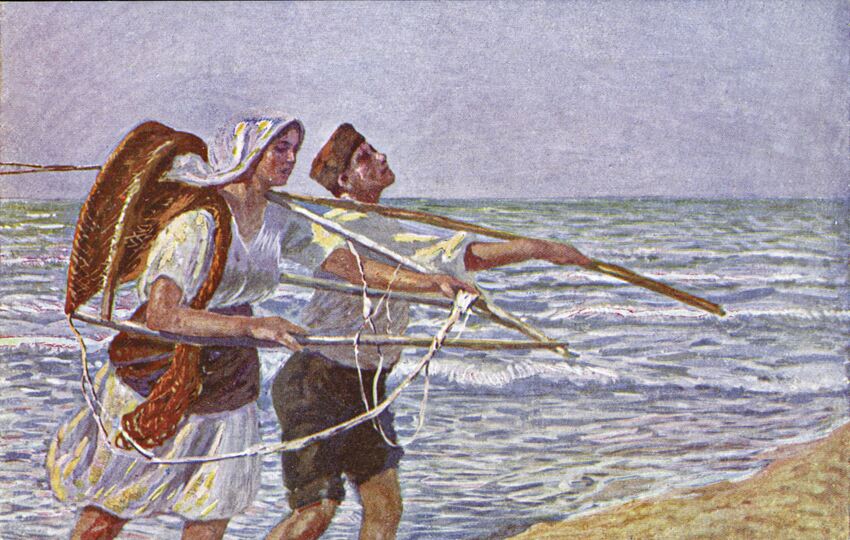
Férre
Harpoons, mounted on a long stick, were used at night on calm seas to spear fish or shellfish attracted by the fire of a lantern placed on the boat. They were also often used in rocky areas to impale seccie (cuttlefish), or small fish from rocks level with the surface of the water. Small reed rafts known as cannizze could also be used.

Togna
Fishing involved the use of various lines and bait depending on the species to be caught. The thread for the togna was made of hemp or thin linen. One or more leads were attached to the lower end, and the hooks were tied to thin pieces of wire placed at regular intervals. Fishing for blotched picarel, sea bass or saddled seabream could be done from the shore, or, especially for mackerel, from a moving boat. This particular type of fishing was practiced from the stern of the lancette, usually when the wind was too weak to allow the nets to be towed, with two or more lines fastened to màngoli (knob-shaped cleats).
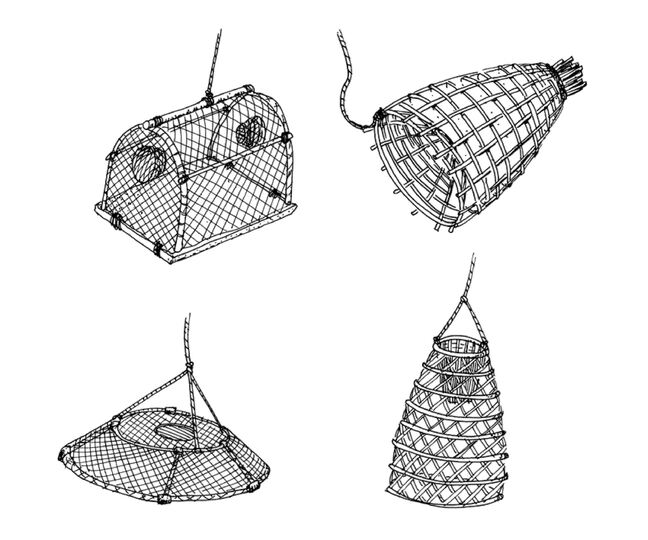
Ciucculare
Metal tool used to fish for paparazze (clams) and ciucculette or zzirezzéire (cockles). This fishing method could be practised directly from the shore at low tide, with the rake connected to a long stick, or near to shore with a rowing boat. In this case, the anchor was dropped and, after moving away, a man lowered the ciucculare from the stern, keeping it planted in the sand so that it scraped along the seabed, while in the bows another sailor would slowly pull on the rope to move closer to the anchor, which acted as a pivot.

Along the cliffs
A tradition on the rocky Chieti coast was the gathering of hairy crabs, sea urchins, mussels and limpets. Coralline algae were also harvested in August for their various healing properties.
Sviluppato da Microware s.r.l.

www.microwareitalia.com